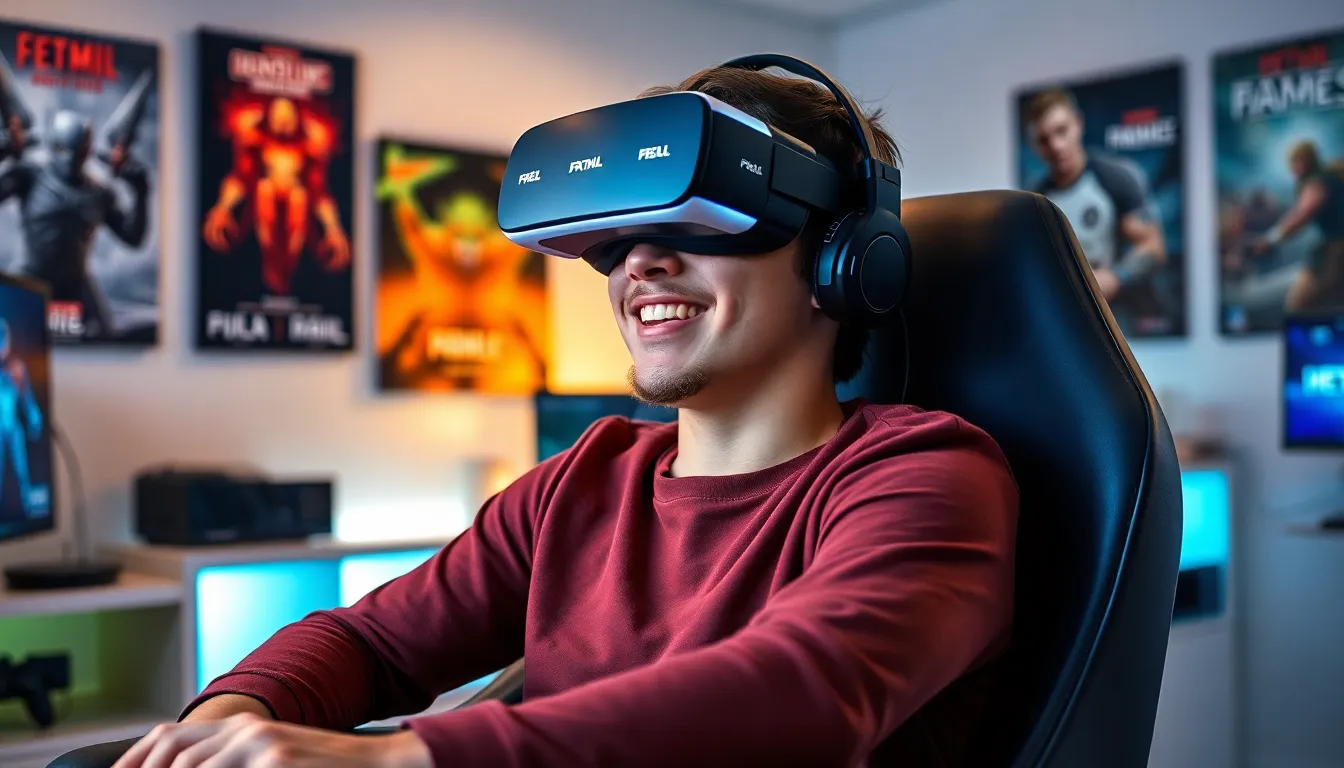Physical Address
304 North Cardinal St.
Dorchester Center, MA 02124
Physical Address
304 North Cardinal St.
Dorchester Center, MA 02124

Imagine diving into a virtual world where the only limit is your imagination, all while lounging on your couch in pajamas. VR cloud gaming is here to transform the way people play, blending the thrill of immersive experiences with the convenience of cloud technology. Forget about bulky consoles and endless downloads; now, gamers can access high-quality titles instantly, no matter where they are.
VR cloud gaming represents a significant shift in how players experience video games. This technology allows for instantaneous access to immersive VR environments without the need for extensive hardware or downloads.
VR cloud gaming enables users to stream games via the internet, leveraging remote servers to process graphics and gameplay. Players engage in virtual reality experiences using compatible devices, eliminating the need for powerful local hardware. By utilizing cloud technology, VR gaming becomes accessible to a broader audience. Starting from any location, gamers can enter rich, virtual worlds and explore them at will.

Key features distinguish VR cloud gaming from traditional gaming methods. First, instant accessibility allows players to join games immediately without waiting for downloads. Second, reduced hardware requirements enable users to play on less powerful devices, making it more inclusive. Third, seamless updates mean that gamers enjoy the latest versions and content without manual downloads. Fourth, cross-platform compatibility helps connect players across various devices. Lastly, multiplayer functionality enhances social interaction in shared virtual spaces.
VR cloud gaming offers numerous advantages that enhance the overall gaming experience. This technology not only provides ease of access but also broadens the appeal of virtual reality gaming.
Accessing VR cloud gaming requires only an internet connection. Gamers can play high-quality titles on various devices, such as PCs, smartphones, and VR headsets. Instant access to games eliminates the frustration of lengthy downloads and installations. No expensive hardware is necessary, allowing a wider demographic to enjoy VR gaming. Cross-platform compatibility ensures that friends can play together regardless of their device. Gamers can easily dive into immersive worlds without significant financial investment in hardware.

Cloud gaming transforms traditional gaming by delivering a seamless experience. Graphics processing occurs on remote servers, resulting in high-quality visuals and performance. Latency plays a crucial role, and advancements minimize delays, ensuring that players enjoy real-time interaction. Multiplayer functionalities are streamlined, allowing for dynamic competition among users. Regular updates and new content are automatically available, enhancing engagement without interruptions. By providing a richer, more interactive experience, VR cloud gaming redefines how players engage with their favorite titles.
Despite the advantages of VR cloud gaming, several challenges exist that can impact the overall experience. Understanding these limitations helps gamers navigate potential issues.
Latency plays a significant role in the VR cloud gaming experience. High latency can lead to delays between input and action on-screen, disrupting immersion. A stable, high-speed internet connection minimizes this concern, but not all users have access to such connections. They often face inconsistencies in speed and bandwidth, which can affect gameplay quality. Players may experience lag, which detracts from the real-time interaction that VR gaming promises. Consequently, fine-tuning internet requirements is crucial for optimal performance.
While VR cloud gaming reduces the need for powerful local hardware, some requirements still apply. Users must have compatible devices capable of streaming high-quality content. Minimum specifications often include sufficient processing power and graphical capability for smooth performance. Gamers without adequate devices might experience degraded visuals or performance issues. Furthermore, VR headsets require specific hardware support to function effectively. Ensuring a device meets these standards remains essential for an enjoyable gaming experience.

Several VR cloud gaming platforms have emerged, each offering unique experiences and features. These platforms significantly shape the landscape of gaming, making VR accessible and enjoyable for a wide audience.
| Platform | Subscription Fee | Game Library Size | Device Compatibility |
|---|---|---|---|
| Nvidia GeForce Now | $19.99/month | 1,000+ games | PC, Mac, Android, NVIDIA Shield |
| PlayStation Now | $9.99/month | 800+ games | PS4, PS5, PC |
| Shadow | $12.99/month | N/A* | PC, Mac, Android |
Nvidia GeForce Now offers an extensive library with over 1,000 games. Players benefit from high-resolution streaming and excellent compatibility across devices. PlayStation Now features a solid catalog of over 800 titles, catering specifically to console gamers. Shadow focuses on providing cloud-based gaming performance, allowing users to access a virtual gaming PC.
Nvidia GeForce Now excels in its support for multiple platforms and frequent updates. This service enhances user experience with seamless cross-platform play. PlayStation Now stands out with its exclusive access to critically-acclaimed PS4 and PS5 titles. It offers users the ability to download titles for offline play, accommodating diverse gaming needs. Shadow provides a full Windows desktop environment, enabling gamers to install any game they choose. This platform’s customizable specifications attract users looking for specific performance and power.
VR cloud gaming is on the brink of significant advancements. Emerging technologies promise to enhance this gaming experience, making it more immersive and accessible.
AI-driven algorithms optimize graphics and latency, allowing gamers to enjoy smoother visuals and rapid response times. 5G networks, with their high speeds and low latency, enable seamless gameplay in previously challenging environments. Edge computing improves data processing by bringing resources closer to players, reducing delays even further. Additionally, advancements in VR hardware, such as lighter headsets and improved displays, enhance user comfort and immersion. Companies like Oculus and HTC are exploring innovations to expand accessibility and make VR gaming more enjoyable for everyone.
The rise of subscription-based models reflects changing consumer preferences. Players increasingly favor platforms offering flexible access to games without large upfront costs. Cross-platform compatibility is gaining traction, allowing users to connect with friends across various devices seamlessly. Enhanced social features in gaming communities foster collaborations and competitions, appealing to a wider demographic. Furthermore, the focus on improving user experience drives investments in faster servers and upgraded infrastructure. Overall, the industry’s momentum indicates a bright future for VR cloud gaming, reshaping how players engage with virtual worlds.